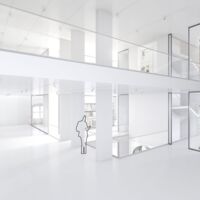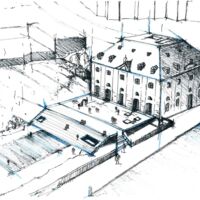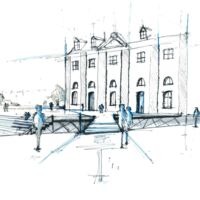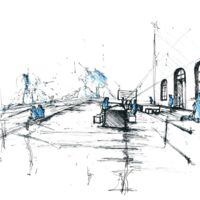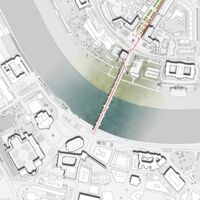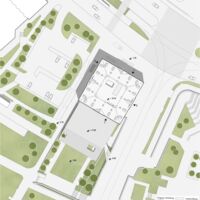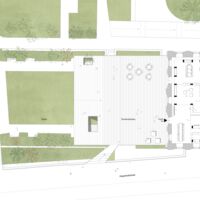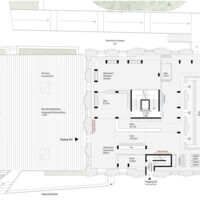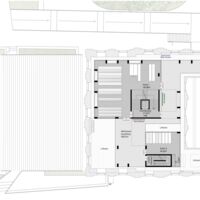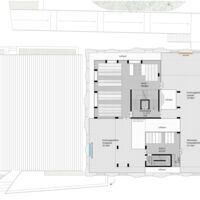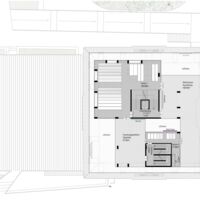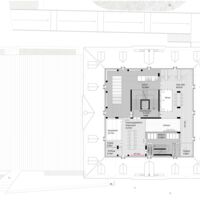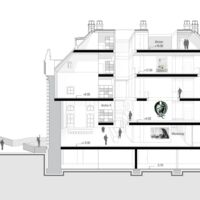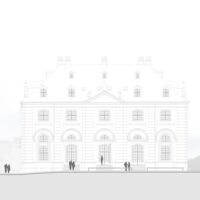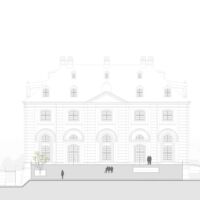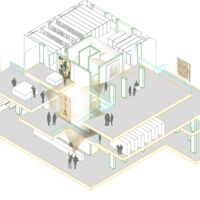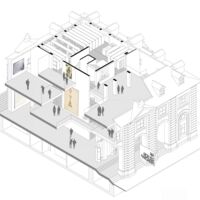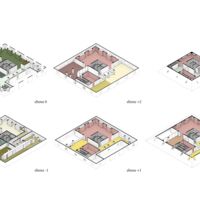archiv der avantgarden
The archiv der avantgarden (Archive of the Avant-Gardes) stands on the Königsufer beside the Elbe River, between Dresden’s historic Innere Altstadt and the more recent Innere Neustadt, the newer urban settlement across the river. Opening up in both directions, the site becomes a space for democracy, research, and encounter. The building was designed in the eighteenth century by Zacharias Longuelune as the Neustadt Watchtower, to protect the old inner city across the Augustus Bridge, and was later enlarged during the Baroque period into the existing Blockhaus. Its function changed several times until it became an administrative building, most recently housing the Sächsische Akademie der Wissenschaften (Saxon Academy of Sciences and Humanities). In 2013, however, it was flooded and not restored. In 2016, the City of Dresden decided to make the Blockhaus available as a research space and event center for the comprehensive avant-garde archive donated to the public by Egidio Marzona. This collection holds important and unique works from this influential period of the twentieth century—including original letters, sketches, drawings, paintings, prototypes, and objects.
The almost symmetrical building is accessed from the Innere Neustadt only, which is the reason for creating a new temporary structure on the side facing the river—above the Baroque garden and directly connected to the Augustus Bridge. This terrace, called the “democracy platform,” doubles the volume from the inside to the outside and welcomes researchers and visitors from around the world attending outdoor workshops, festivals, and cultural events. There is a strong focus on public access to the archival spaces—integrating all security demands—and to the adjacent reading zones and exhibition areas distributed over five levels. Fitted into the protected space of the historic Baroque Blockhaus, the vertical design connects all stories via air spaces and sight lines. A created matrix—which includes philosophers like Ludwig Wittgenstein, musicians like John Cage, artists like Marcel Duchamp or Joseph Beuys, and architects like Ludwig Mies van der Rohe—defines both spatial and contentoriented arrangements. In addition to public interaction (workshops, exhibitions, discussions), quiet zones for studying books, films, and digital media serve researchers from all over the world—creating a source of inspiration, serving as a catalyst for visitors’ streams of thought, and encouraging relationships with research platforms.

